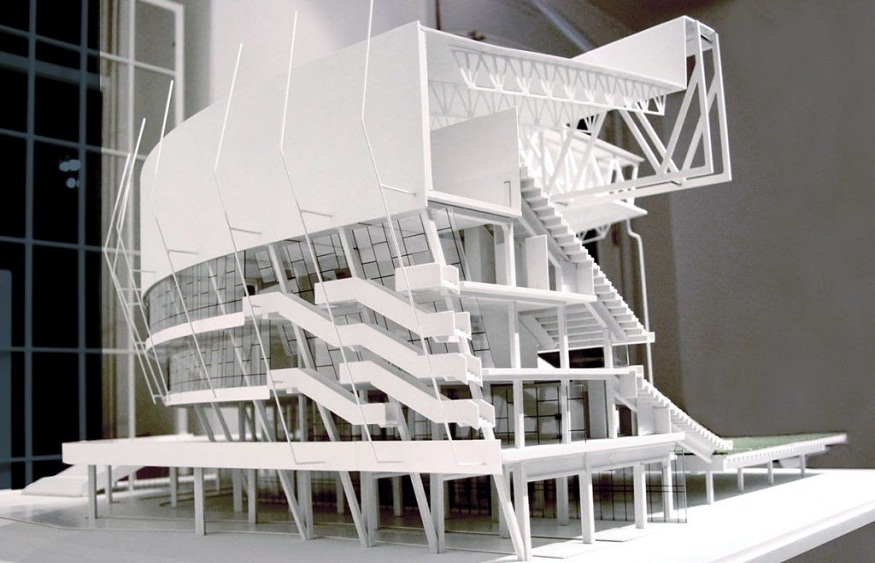Indeed, 3D printing has recently transformed the face of many industries. Architecture is also no exception. Architects have always longed to cast their ideas into reality in three-dimensional models. The model-making process has traditionally been very time-consuming, involving at times high costs, and may not be very precise as far as intricately designed concepts are concerned. This is where 3D printing comes in. It provides architects with the opportunity to have an advanced way of creating all their detailed and accurate models within a fraction of the time. This article aims to elaborate on how 3D printing benefits architects, introduce the concept of 3D architectural model makers, and discuss special printing techniques applied in Dubai.
The Role of 3D Printing for Architects
For architects, making physical models of their design is indispensable. They allow a better view for a client or stakeholders about the building; which is very hard to achieve with 2D drawings or even digital renderings alone. 3D printing for architects happens to present a solution in the light of innovation and therefore permits architects to make accurate and scale models from designs.
One of the major advantages of 3D printing in architecture is its rapid rate of model production, often days or even weeks that would have been involved by more labor-intensive methods such as handcrafting, foam and cardboard. If the model design is not extremely complex, a 3D printer can produce an incredibly detailed model within a couple of hours.
It has also enabled architects to design with much more complex geometries and finer detail than might be producible at all or too cumbersome to make by hand. From curved surfaces to hollow, almost any shape can be obtained using a 3D printer, allowing an architect to think far beyond their creativity.
How 3D Printing is Changing Architectural Model Making
Using 3D printing in architecture not only hastens the generation of models but also elevates the quality and accuracy of the models themselves. A 3D architectural model maker can make use of it in producing models with an excellent level of detail, even to the tiny architectural details. The precision becomes very significant in the presentation of the design to customers so that they can truly see how the final structure will look like.
One of the most significant advantages of 3D printing is that it prints in layers, and replication of textures and patterns on a model can easily be done. For example, the surface of a building façade can print at the same texture as the real materials that will later be used in construction, giving more realistic impressions. Moreover, such 3D printers can offer architects a wide range of options when choosing materials: from plastics and resins to metals. These models may not only be visually authentic but also strong and durable.
Additionally, other techniques such as laser cutting and CNC milling get merged with 3D printing in the hands of 3D architectural model makers for the production of hybrid models that assume the strengths of every technique. This method of hybrids will ensure that the product developed will both be aesthetically pleasing and practical enough to present complex designs well.
The third benefit is that it proves to be cost-effective. Traditional methods often require highly skilled labour and expensive materials, and 3D printing saves on material waste and reduces labour costs. Once the digital model is prepared, the printer does most of the work, allowing architects to focus more on perfecting their designs rather than wasting time and other resources trying to build the model themselves.
Growing Influence of Dubai in 3D Printing
Dubai has always been the hub for leading innovation in architecture and construction, and it would not be a wonder if the Dubai 3D printing techniques seem to gain fame in a global-scale prestige. The emirate city embraced 3D printing as more of a tool for model making but is now employing the technology for actual construction. Dubai aims to take a point at the top of 3D-printed buildings and seeks to reach 25 per cent of new buildings constructed with the help of this technology in 2030.
To the architects in Dubai, this means leading the curve of design and embracing new technologies that can help create not only accurate models but also building components in real life. Techniques in 3D printing in Dubai are now establishing a new standard of architectural innovation, considering sustainability, efficiency, and creativity.
Perhaps the most fantastic potential of 3D printing in Dubai is reducing waste and lowering building costs. As all components are printed in layers, materials can be used more effectively and less wasted. This would be very important for a city like Dubai, where fast development calls for ecologically sound construction methods. This is solved by 3D printing as it eliminates the unnecessary materials that have developed into a material whose role has been defined in the construction industry.
It also enables architects to create more complicated designs and unique shapes with 3D printing techniques. Structures can be designed and even constructed in ways that may not have been achieved easily using the traditional way. Most of the more iconic and futuristic designs in the city have been because of this 3D printing ability, and because of this reason, Dubai stands at the forefront of architectural innovation.
Conclusion
Now, of course, 3D printing would have changed things quite drastically for architects in terms of rapid and fast concerting and design testing. This is an impossible matter for architects to forego because this technology will give them new tools for precision and speed: it becomes possible to create a computer file of any design and quickly change it into a real object. Whether through a 3D architectural model maker or using Dubai 3D printing techniques, the possibilities given by this technology are endless when it comes to creativity, efficiency, and sustainability.
Architectural model making and construction could go even more promising as 3D printing continues to evolve. The future of architecture is bright, what with the kind of trends put in motion by the development of skyscrapers in cities like Dubai.

